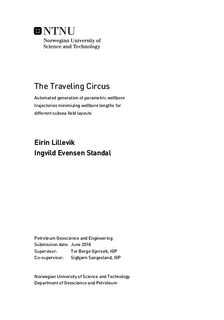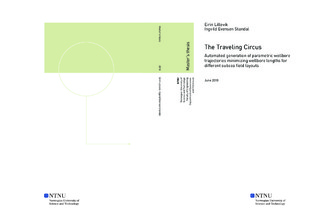| dc.description.abstract | It is known from the media that Equinor is trying a new generation of unmanned wellhead platforms on the Oseberg field. According to them, this will cut costs dramatically. The reason is that dry well components are used. These are much cheaper than wet ones. They call the solution "Subsea on a Stick" (SoS) (Lorentzen, 2015). Gathering all wells on one platform means that all wells have to be drilled from the same position. This increases the average well path length (WPL) dramatically (Lillevik and Standal, 2017). How does this solution affect the drilling costs?
Lillevik and Standal (2017) initiated the way towards an automatic field development tool. The tool compares different subsea field layouts and identifies the optimal one. The optimal solution is the one that minimizes the sum of the drilling costs and the subsea hardware and installation costs. The program developed by Lillevik and Standal (2017) is further developed in this thesis. As a large part of the subsea field development costs are drilling related costs, this thesis focuses on comparing the drilling length in different field developments. This is done by studying five particular layouts: only satellite wells, 2-slots templates, 4-slots templates, 6-slots templates, and SoS. When templates are used, the optimal grouping of completion intervals is computed using the Traveling Circus Method (TCM). TCM identifies which completion intervals that should be reached from the same template to minimize the average WPL. In every field layout, the shortest drillable wellbore trajectories are constructed using trigonometric relations.
The comparison shows that the average and total drilling length are highly sensitive to the field development concept. Satellite wells yield the shortest average WPL and the lowest drilling cost. SoS, on the other hand, yields a significant increase in WPL and cost. Thus, the program developed in this thesis favors a field layout with satellite wells, without taking the costs of subsea hardware and installation into account. Subsea hardware and installation costs remain to be included to complete the automated tool and identify the optimal field layout. The extension of this work will include a development of a subsea EPCI (Engineering, Procurement, Construction, and Installation) program. | |

